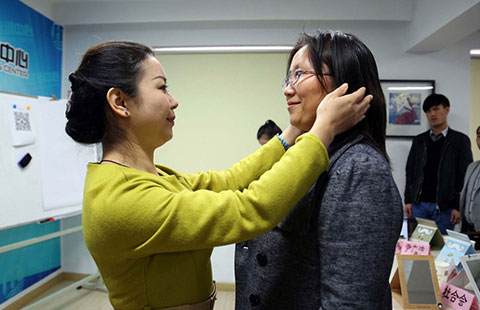Experts optimistic about China's economy, citing pro-growth policies
(Xinhua) Updated: 2015-07-24 10:50BEIJING - China's economy in the second quarter stayed on track to hit the government's 7-percent growth target for the entire year, beating negative speculation over China's economic performance and winning applaud from overseas experts.
In exclusive interviews with Xinhua or articles published by news media, the experts attributed the favorable half-year performance to the country's ongoing reform and flexible policies.
"The first impression from the latest data is one of stability, with signs of restored momentum heading into the second half of the year. However, to the extent that growth was supported by financial sector gains from the stock market, it won't be sustained without further stimulus," Tom Orlik and Fielding Chen, Asia Economists for Bloomberg, told Xinhua.
They also mentioned that data for June pointed to restored momentum at the end of the quarter: Industrial output accelerated to 6.8 percent annual growth from 6.1 percent in May; retail sales accelerated slightly and fixed asset investment held steady -- halting a series of falls in the growth rate.
"Resilient growth likely reflects a combination of stimulus measures passing through to the real economy and frenetic activity on the equity market," the Bloomberg experts added.
Igor Nikolayev, director of the FBK Strategic Analysis Institute of Russia, regarded the data as a "pleasant surprise" with key figures beyond expectations, beating former market forecast of 6.8 percent.
"China has scored remarkable economic achievements in the past 30 years and people have been concerned about when the rapid growth could be slowed down. Now is the time," Nikolayev said.
In the eyes of Brendan Ahern, chief investment officer of a US fund company Kraneshares, the economic data are "positive indications that China's economy is coming through a bottoming process."
"Most impressive is the growth in retail sales which rose 10.6 percent, which shows the long run policy has benefited urbanization and raised domestic consumption," Ahern told reporters.
Experts also noticed many ongoing changes: The tertiary industry constituted 49.5 percent of the GDP; consumer spending played a bigger role in fueling economic growth; per capita disposable income grew faster than the GPD; the job market was improving; and new industries, businesses and products were bringing up.
These changes resulted from such major reform initiatives as "Made in China 2025" and "Internet Plus."
- 2015 China International Fair for Investment and Trade kicks off in Xiamen
- China's commodity imports robust in Jan-Aug period
- China stocks rebound 2.92%
- 2015 China box office already past 2014 total
- China foreign trade decline widens in August
- Interview: JP Morgan's senior executive bullish on China
- Innovation, development the focus for NZ mayors
- Lives of freelancers

















